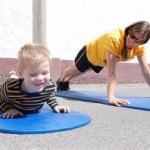Weekly Meal Prep
Save time and energy by completing weekly meal prep. Choose one day each week to shop, chop, wash, prepare and cook. Healthy meals for the whole family will be at your disposal every day of the week:
Chop all veggies. Place in baggies so they are ready to go.
Wash produce. Prepare and clean produce so everyone in the family can simply grab and go!
Wash herbs. Wrap in paper towel, place in baggies and store in the fridge.
Bulk cook meats for the week. Portion out meat and store in air tight containers. All that’s needed is to heat it up.
Bulk cook entree’s to create left-overs. Cook casseroles, chili, soups and stews with a plan for left-overs. Refreshing a meal with a creative side dish or combination is a great way to minimize cooking during the week.
 Subscribe
Subscribe








